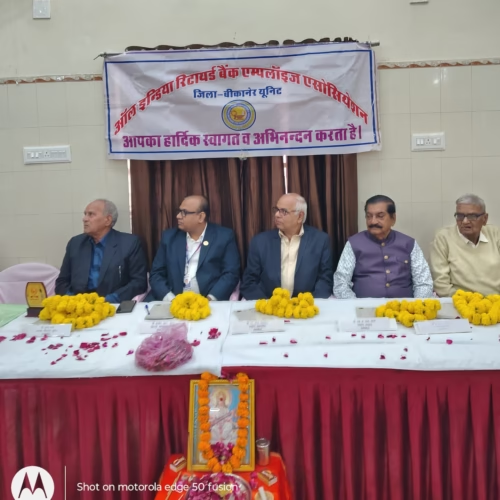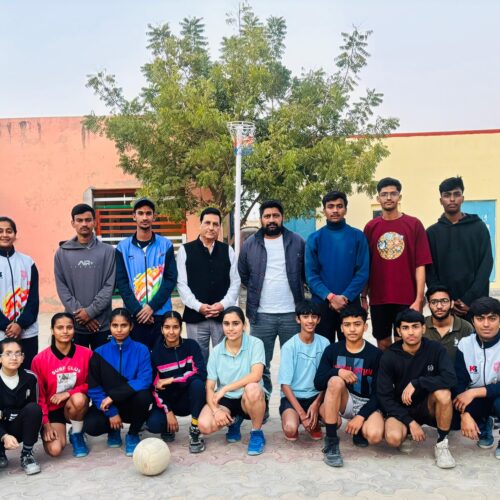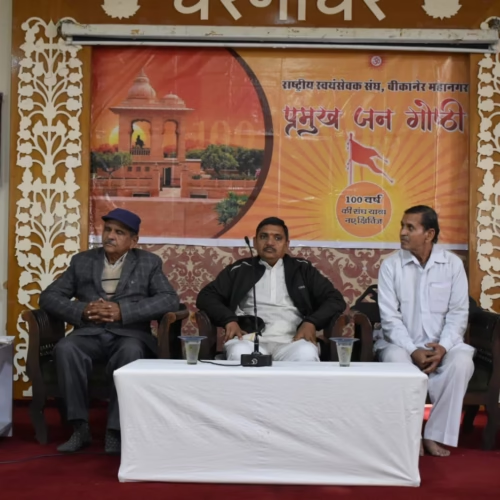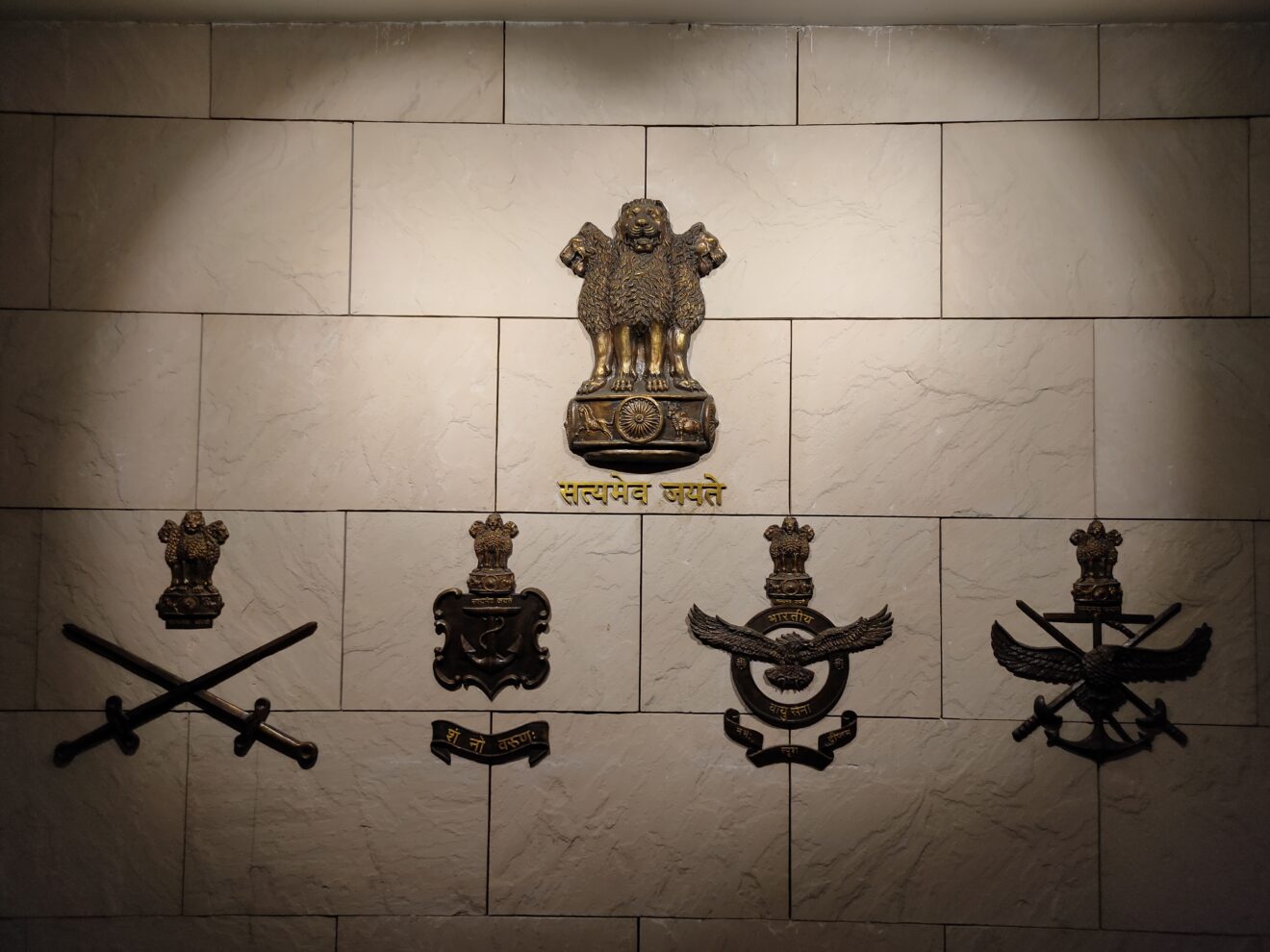BY DEFENCE JOURNALIST SAHIL | T.I.N. NETWORK
Defence Secretary Rajesh Kumar Singh Conducts Strategic Forward-Area Review Across the Central Sector, Reinforcing India’s Border Preparedness
In a powerful display of India’s unflinching commitment to national security, Defence Secretary Rajesh Kumar Singh completed a three-day high-level visit to the Central Sector—from 15 to 17 November 2025—touring some of the country’s most sensitive forward locations, interacting with deployed troops, assessing infrastructure readiness, and reviewing key operational preparations along a stretch that remains critical in India’s evolving military calculus.
The visit, spanning Pithoragarh, Navidang, and several high-altitude deployment areas, has come at a time when New Delhi continues to strengthen its strategic posture across the Himalayan frontier. With global and regional geopolitical shifts reshaping defence priorities, the Central Sector has re-emerged as an area of focused capability development, balancing both deterrence and rapid-response readiness. The Defence Secretary’s visit, therefore, was not merely administrative oversight—it was a strong signalling of India’s determination to accelerate operational preparedness and infrastructure integration across the high reaches of Uttarakhand.
A High-Altitude Briefing: Situation Review at Pithoragarh
Upon arriving in Pithoragarh, one of the most crucial military and logistical hubs in Uttarakhand, the Defence Secretary was received by senior field commanders who provided him with a comprehensive overview of major operational developments in the sector. The General Officer Commanding, Uttar Bharat Area, along with the Commander of 119 (Independent) Infantry Brigade Group, presented critical assessments covering troop readiness, surveillance architecture, mountain-warfare posture, and ongoing adjustments based on the dynamic security environment.
In the closed-door briefing, the Defence Secretary was updated on troop deployments, seasonal shift patterns, and the challenges posed by extreme terrain and weather variations. He was also apprised of India’s ongoing efforts to maintain an enhanced winter posture in regions that often witness significant logistical complexities. These detailed discussions reflected the central importance of the Central Sector, which has witnessed a steady expansion of strategic infrastructure, dual-use connectivity projects, and mission-critical modernization initiatives in recent years.
The Defence Secretary expressed satisfaction at the operational synergy between the Army formations and strategic agencies, noting that the region’s enhanced vigilance and well-coordinated military posture are crucial to India’s overall northern command preparedness.
Navidang: Assessing Border Infrastructure, Meeting Ground Commanders
The next leg of the visit took the Defence Secretary to Navidang, a forward region known for its rugged terrain, high-altitude passes, and logistical challenges that test even the most well-trained mountain troops. Here, he interacted extensively with battalion commanders deployed along critical axes and took stock of the theatre-specific operational plans designed to ensure rapid mobilization, area dominance, and uninterrupted surveillance across the frontier.
One of the key highlights of the Navidang visit was his interaction with the Chief Engineer of BRO’s Project Hirak, under whose supervision several high-altitude border infrastructure projects—including approach roads, bridges, tunnels, and all-weather connectivity upgrades—are currently underway. Accompanied by the Director General Border Roads (DGBR), the Defence Secretary reviewed the pace of progress and examined the timelines for completion of priority projects that are essential for ensuring strategic mobility of forces in any contingency scenario.
Engineers and field teams from BRO briefed him on the ongoing challenges posed by terrain instability, snowfall, restricted working months, and the complexities of transporting heavy machinery to near-frontline work zones. These challenges, however, have not deterred BRO’s push to expand India’s logistical depth. The Defence Secretary appreciated the organisation’s persistent effort, especially in building infrastructure that dramatically reduces response times during emergencies or heightened alert situations.
BRO officials emphasised that multiple works—including new road alignments, high-altitude logistic nodes, pre-fab troop shelters, and bridges capable of supporting heavy mechanised platforms—are being steadily accelerated under Government directives to strengthen border robustness. The Defence Secretary, acknowledging the labour and dedication of field workers deployed in such harsh conditions, reiterated the Government’s intention to provide all necessary support to maintain the momentum of construction.
Reaffirming National Resolve: Connectivity, Mobility, and Security
Throughout the visit, a recurring theme was the Prime Minister’s vision of boosting frontier connectivity as a foundational requirement for India’s national security architecture. The Defence Secretary emphasised that forward infrastructure—often seen as mere roads and bridges—has evolved into a strategic multiplier capable of dramatically enhancing India’s deterrence posture and operational agility.
In his interactions with soldiers and engineers, he underlined that India’s border regions are no longer remote outposts but strategic arteries that strengthen the country’s readiness, resilience, and rapid-response capability. The Government, he asserted, remains deeply committed to ensuring that every forward-deployed soldier has access to reliable logistics, advanced infrastructure, and the technological enablers needed to operate effectively in the high Himalayas.
The visit also highlighted India’s effort to harmonise defence infrastructure with sustainable development in border regions. In many areas, BRO’s developmental projects not only support military objectives but also benefit local communities by improving connectivity, access, and economic opportunities. The Defence Secretary appreciated this dual-purpose approach, noting that national security and grassroots upliftment often go hand-in-hand in sensitive hill regions.
A Strategic Message Beyond Geography
The Defence Secretary’s forward-area tour—spanning mountain commands, engineering groups, and frontline units—has sent a clear message of reassurance to both the troops serving on the ground and the nation observing from afar. His presence underscored that the Central Sector remains an unshakeable component of India’s larger defence strategy, where preparedness is being continuously strengthened through a mix of infrastructure, technology, and human capability.
As geopolitical tensions continue to evolve and challenges at high altitudes remain unpredictable, India’s focus on building resilient border systems has gained unprecedented priority. The Defence Secretary’s interactions, reviews, and assessments were a reflection of that seriousness—a reaffirmation that India’s defence establishment is deeply invested in ensuring that its frontier forces remain equipped, empowered, and strategically advantaged.
Through this visit, the Government has once again demonstrated that national security is not merely a policy directive but a continuous, evolving commitment—one that begins from the highest offices in Delhi and stretches all the way to the cold, windswept, high-altitude posts where India’s soldiers stand guard.
BY DEFENCE JOURNALIST SAHIL | T.I.N. NETWORK
केंद्रीय सेक्टर में अग्रिम क्षेत्रों का व्यापक निरीक्षण: रक्षा सचिव राजेश कुमार सिंह का तीन-दिवसीय दौरा भारत की सीमा-सुरक्षा प्रतिबद्धता का सशक्त संकेत
भारत की सामरिक प्रतिबद्धता और उत्तर सीमाओं पर सैन्य तत्परता को नए स्तर पर ले जाने की दिशा में, रक्षा सचिव राजेश कुमार सिंह ने 15 से 17 नवंबर 2025 तक केंद्रीय सेक्टर के अत्यंत संवेदनशील अग्रिम इलाकों का विस्तृत और गहन दौरा किया। यह दौरा सिर्फ़ औपचारिक समीक्षा नहीं था, बल्कि भारत की राष्ट्रीय सुरक्षा संरचना को मजबूत करने, संवेदनशील सीमावर्ती ढाँचों को अपग्रेड करने और सैनिकों के ऑपरेशनल मोर्चे को और भी धारदार बनाने की दिशा में एक निर्णायक कदम था।
यह दौरा पीथौरागढ़, नाविडांग और कई अन्य ऊँचाई वाले क्षेत्रों में फैला रहा — ऐसे इलाके जहाँ की भौगोलिक कठिनाइयाँ, मौसम की अनिश्चितता और सामरिक आवश्यकता भारत की उच्चतम सैन्य क्षमता की परीक्षा लेती हैं। बदलते वैश्विक समीकरणों, चीन सीमा की बदलती गतिविधियों और हिमालयी क्षेत्र में बढ़ते रणनीतिक दबाव के बीच, केंद्रीय सेक्टर एक बार फिर दिल्ली के सुरक्षा नीति-निर्माण में प्रमुख केंद्र के रूप में उभर रहा है। ऐसे समय में रक्षा सचिव का यह फॉरवर्ड एरिया रिव्यू सरकार की मजबूत नीति-संकल्प का स्पष्ट संदेश है।
पीथौरागढ़ में ऊँचाई वाले मोर्चों पर विस्तृत ऑपरेशनल ब्रीफिंग
दौरे की शुरुआत पीथौरागढ़ से हुई — एक ऐसा स्थान जो उत्तर भारत की सैन्य गतिशीलता का महत्वपूर्ण नोड है। यहां पहुंचते ही रक्षा सचिव का स्वागत वरिष्ठ सैन्य अधिकारियों ने किया, जिन्होंने उन्हें सेक्टर की पूरी ऑपरेशनल तस्वीर से अवगत कराया।
उत्तरी भारत क्षेत्र (Uttar Bharat Area) के जनरल ऑफिसर कमांडिंग और 119 (स्वतंत्र) इन्फैंट्री ब्रिगेड ग्रुप के कमांडर ने क्षेत्र की सामरिक संरचना, सैनिकों की तैनाती की स्थिति, सर्विलांस नेटवर्क, उच्च हिमालयी युद्ध-तैयारी, और मौजूदा सुरक्षा परिदृश्य से जुड़े अपडेट साझा किए।
ब्रीफिंग में मौसम-आधारित सैनिक तैनाती की चुनौतियाँ, गतिशील स्थिति में सैनिकों की क्षमता और ऊँचाई वाले क्षेत्रों में रसद आपूर्ति की जटिलताओं पर विशेष चर्चा हुई। यह भी बताया गया कि पिछले वर्षों में इस सेक्टर में बुनियादी ढाँचे के विस्तार, द्वि-उपयोगी (dual-use) सड़कों और मिशन-क्रिटिकल प्रोजेक्ट्स के कारण भारतीय सेना की सतर्कता और प्रतिक्रिया क्षमता में काफी वृद्धि हुई है।
रक्षा सचिव ने सेना और रणनीतिक एजेंसियों के बीच समन्वय और क्षेत्र की तैयारी की सराहना की, और कहा कि यह सेक्टर उत्तर भारत की सुरक्षा स्थिति में ‘रीढ़’ की भूमिका निभाता है।
नाविडांग में वास्तविक परिस्थितियों की समीक्षा, कमांडरों और BRO इंजीनियरों से बातचीत
पीथौरागढ़ से आगे बढ़ते हुए रक्षा सचिव का काफिला नाविडांग पहुँचा — एक ऐसा क्षेत्र जहाँ ऊँचाई, ठंड, और दुर्गम चट्टानी ट्रैक सैनिकों व इंजीनियरों दोनों की परीक्षा लेते हैं। यहाँ उन्होंने अग्रिम क्षेत्रों की जिम्मेदारी संभाल रहे बटालियन कमांडरों से मुलाकात की और वास्तविक समय में सुरक्षा तैयारियों, युद्धक योजनाओं और निगरानी पैटर्न की समीक्षा की।
नाविडांग में उनका मुख्य फोकस बॉर्डर रोड्स ऑर्गनाइजेशन (BRO) की ओर था, जहां उन्होंने प्रोजेक्ट हीरक (Project Hirak) के चीफ इंजीनियर से उच्च हिमालयी इंफ्रास्ट्रक्चर प्रोजेक्ट्स की प्रगति के बारे में विस्तृत जानकारी ली। पहाड़ी मार्ग, पुलों, सुरंगों, ऑल-वेदर कनेक्टिविटी और अत्यंत ऊँचाई पर निर्माण होने वाली सड़कें इस सेक्टर की रणनीतिक मजबूती का आधार हैं, और इन्हीं प्रोजेक्ट्स की समीक्षा के लिए डीजीबीआर (Director General Border Roads) भी उनके साथ मौजूद थे।
BRO इंजीनियरों ने बताया कि कठिन मौसम, लगातार बदलती भौगोलिक चुनौतियाँ, भारी मशीनरी को अग्रिम साइटों तक पहुँचाना, और सीमित कार्यकाल — ये सब कठिनाइयाँ इस क्षेत्र में लगातार बनी रहती हैं। इसके बावजूद BRO ने निर्माण की गति बढ़ाई है और कई प्रोजेक्ट्स को उच्च प्राथमिकता पर पूरा करने के लिए दिन-रात काम जारी है।
रक्षा सचिव ने कठिन परिस्थितियों में काम कर रहे इंजीनियरों और मजदूरों के समर्पण की सराहना करते हुए कहा कि सरकार सीमा क्षेत्रों में कनेक्टिविटी और सामरिक गतिशीलता को सर्वोच्च प्राथमिकता देती है। उन्होंने भरोसा दिलाया कि BRO को सभी जरूरी संसाधन और सहायता उपलब्ध कराई जाएगी ताकि इन प्रोजेक्ट्स को समयबद्ध तरीके से पूरा किया जा सके।
कनेक्टिविटी, गतिशीलता और राष्ट्रीय सुरक्षा को नई दिशा
अपने पूरे दौरे के दौरान रक्षा सचिव ने एक विचार बार-बार दोहराया — कि भारत की सीमाएँ अब सिर्फ़ अंतिम चौकियाँ नहीं हैं, बल्कि ये राष्ट्र की सैन्य प्रतिक्रिया क्षमता और रणनीतिक आत्मनिर्भरता के मुख्य स्तंभ हैं। उन्होंने कहा कि ऊँचाई वाले इन इलाकों में बनने वाले हर पुल, हर सड़क और हर सुरंग से भारतीय सेना की त्वरित प्रतिक्रिया क्षमता सुधरती है और देश की सामरिक पकड़ मजबूत होती है।
उन्होंने सैनिकों से बात करते हुए यह भी कहा कि सरकार का लक्ष्य है कि अग्रिम मोर्चों पर तैनात हर सैनिक को बेहतर रसद, मजबूत इंफ्रास्ट्रक्चर, और अत्याधुनिक तकनीकी सहायता उपलब्ध हो ताकि वे कठिन परिस्थितियों में भी उच्चतम दक्षता के साथ देश की रक्षा कर सकें।
BRO के प्रोजेक्ट्स की वजह से कई दुर्गम क्षेत्रों में स्थानीय समुदायों को भी लाभ मिल रहा है। सड़क बन रही है, कनेक्टिविटी बेहतर हुई है, और स्वास्थ्य, शिक्षा व व्यापार के अवसर बढ़े हैं। रक्षा सचिव ने इस ‘डुअल यूज मॉडल’ की सराहना की और कहा कि सीमा सुरक्षा और सामाजिक विकास एक-दूसरे के पूरक हैं।
सीमा पर एक स्पष्ट संदेश – भारत तैयार है, प्रतिबद्ध है, और आगे बढ़ रहा है
रक्षा सचिव राजेश कुमार सिंह का तीन-दिवसीय दौरा सिर्फ निरीक्षण भर नहीं था — यह भारत की सामरिक इच्छा शक्ति, राजनीतिक-सैन्य समन्वय और सीमा सुरक्षा की बड़ी रणनीति का गहरा संदेश था। फॉरवर्ड पोस्टों पर सैनिकों से बातचीत, BRO के इंजीनियरों से चर्चा, और कमांडरों से विस्तृत योजनाओं की समीक्षा ने यह स्पष्ट कर दिया कि केंद्रीय सेक्टर भारत की राष्ट्रीय सुरक्षा नीति के केंद्र में है।
इस महत्वपूर्ण दौरे ने एक बार फिर साबित किया कि राष्ट्रीय सुरक्षा किसी कागज़ी अवधारणा का नाम नहीं है — यह एक सतत प्रक्रिया है, जो दिल्ली के उच्च कार्यालयों से शुरू होकर उन ऊँचाई वाले ठंडे मोर्चों तक पहुँचती है जहाँ भारत का जवान हर पल देश की रक्षा में खड़ा है।
कठिन वातावरण, ऊँचे पहाड़, कम तापमान और दुर्गम रास्ते — ये सब भारतीय सैनिकों के संकल्प को रोक नहीं सकते। रक्षा सचिव का यह दौरा इसी अदम्य भावना और भारत की बढ़ती सैन्य तैयारी को सलाम करता है।















Add Comment